Introduction to top 30 fast growing vegetables at home: Gardeners select a site, plan the garden, prepare the soil, select seeds and plants, plant a crop, and care for it until it is ready to harvest. Fresh produce is then harvested for consumption, sharing, or sale. Anyone willing to dedicate some time every day to nurturing the plants can grow a vegetable garden. A little money, time, and talent would be helpful, but they aren’t essential.
Practice and patience will improve your skills over time. Usually, the first attempt won’t be a huge success. Vegetables require a certain amount of space, but not necessarily acres. There is no requirement that a vegetable garden is planted in the ground or on a planting bed. Many vegetables can be grown in containers. For example, with a 12-inch pot on the back deck, you can grow enough lettuce to make a salad. In addition, you can add radishes and carrots, which are also quickly grown in 12-inch containers for a sweet and spicy salad. The secret to success is more than just having a place to grow vegetables. The plants require water, sunlight, soil, air, fertilizer, and care.
Fast growing vegetables at home
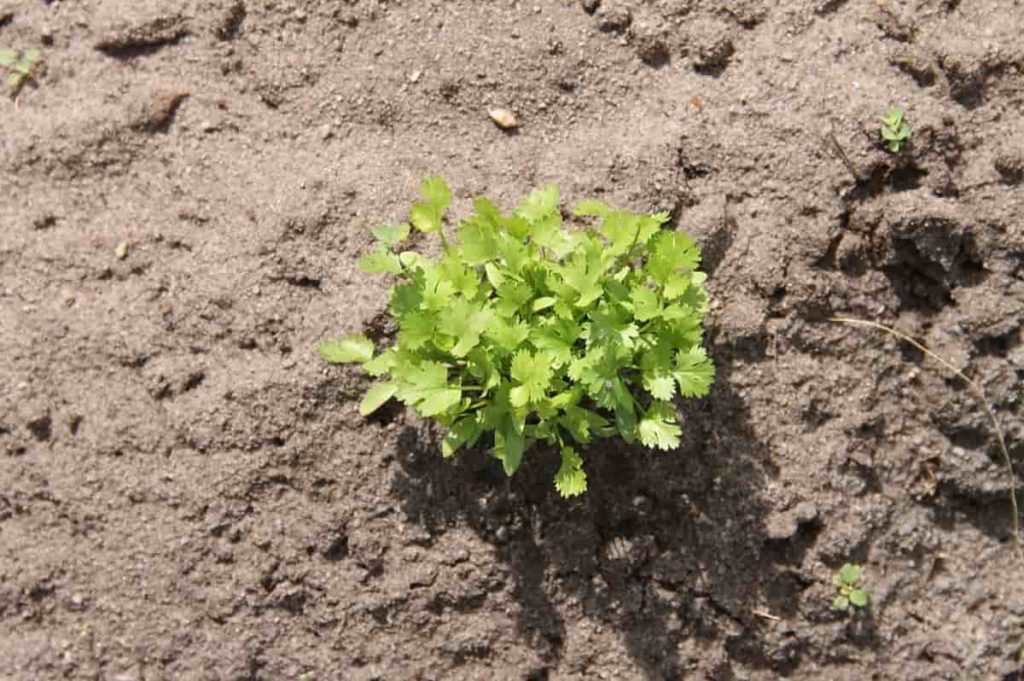
Coriander
Coriander is a versatile herb used in numerous dishes and dips. Potted or in your garden, you can quickly grow it. Cilantro is best grown from seeds because they germinate within seven to ten days.
Potatoes
One of the easiest vegetables to grow at home is potatoes. You can sometimes let potatoes grow by themselves if you leave them for a long time. For example, you can bury an entire potato in a glass pot or soil. The potato will take root, and a new plant will grow soon.
Pumpkin
Growing pumpkins is easy, and they can sprout anywhere. The exact process applies to squash as well. The pumpkin seeds will sprout when buried in the soil in a few days.
Basil
Basil is one of the most versatile herbs in the garden because of its versatility. You can grow it year-round, but it takes its best form in the summer. Additionally, once you plant basil, you can cut the leaves, and you’ll always have fresh basil on hand.
Mushrooms
Take the caps off the mushrooms and plant them in your garden. Of course, you need the right time and environment to grow mushrooms, but you will always have fresh mushrooms at hand if you do it right.
Peppers
Peppers have a lot of seeds, so they are easy to grow at home. Seeds from peppers can be collected, cleaned, dried on a paper towel, then planted in a pot or the garden. In addition, you can grow peppers in a container.
Green onions/ Scallions
Green onions or scallions are best used as a garnish in salads, fried rice, and noodles. If you want to get some light, put the onion roots in a glass of water with the unused parts. The onion roots will grow new shoots in a few days.
Tomatoes
Tomatoes can be grown without seeds. To grow your tomato plant, you can use the seeds inside the tomato. Extraction of the tomato seeds requires a toothpick or burying half of the fruit. The plant will grow due to the decomposition of the rest of the tomatoes.
In case if you miss this: Top 25 Vegetables to Grow on Raised Beds
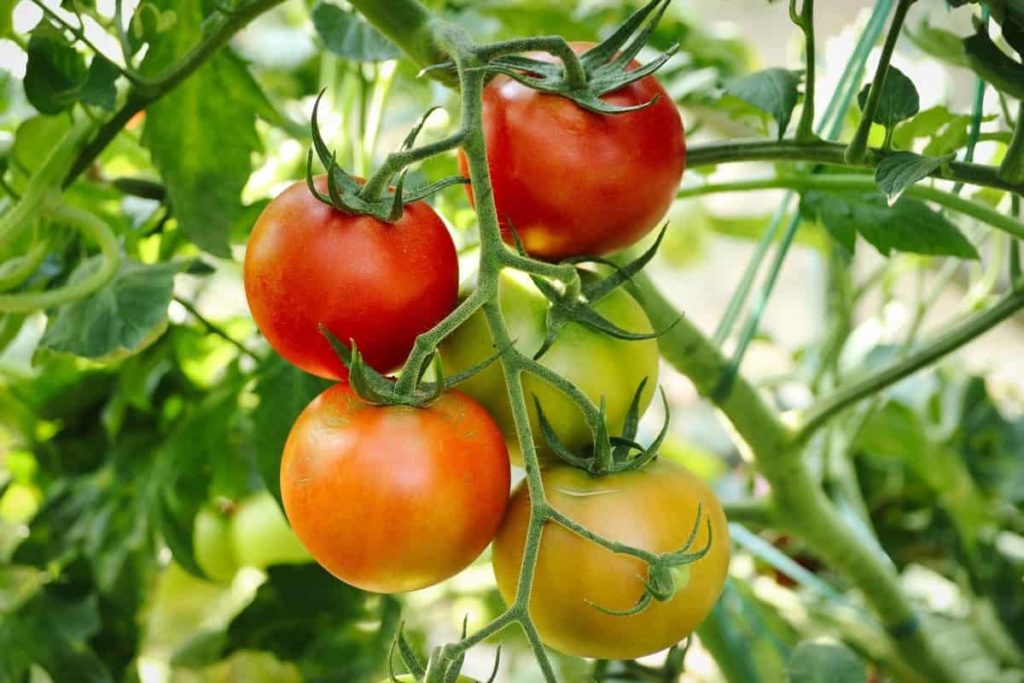
Arugula
The peppery taste and breathtaking color of arugula make it a popular choice among chefs. Our old homestead had it growing. It was a tasty addition to our perennial garden. Consider growing this flavorful vegetable if you’d like a peppery green to throw in your salad. It would help if you planted it, waited about a month for the leaves to mature, and then cut the leaves when they’re ready. You’ll enjoy them each year as they grow back. Nearly all zones can grow arugula and harvest it after 30 days.
Spinach
Growing spinach was one of my first experiments. It overgrows and is easy to maintain. In good-quality dirt, you sow the seeds directly. You must then water and wait. Fresh spinach will be ready in about 4-6 weeks.
Baby Carrots
A baby carrot tastes great, is excellent as a snack can be used for cooking, and doesn’t take as long as a full-sized carrot to grow to maturity. You should choose baby carrots if you enjoy carrots and want them quickly. You can grow them in the ground or containers depending on your situation. Make sure the seeds are sown directly in quality dirt in both cases. Your first harvest will be ready in about 30 days.
Radishes
Radishes are probably among the fastest plants you can grow. Growing them is also very easy. Radishes are a tremendous fast-growing vegetable to start growing if you want to grow your own. Directly sow the seeds in good soil. Radishes are harvested in zones 2-10 in about 22-50 days.
Cucumbers
It is possible to grow cucumbers in a variety of ways. Cucumbers are delicious to eat. Start by eating them fresh. Salads with them would be great. You can then make pickles out of the fresh cucumbers when you are “cucumber-out.”. Cucumbers like to run, so you’ll have to either give them plenty of space to grow or place them on a trellis. Pickling cucumbers are harvested as early as 50 days after planting, and they can be grown in zones 4-11.
Beets
Vegetables like beets are either loved or hated. Even if you don’t like the beet itself, you may enjoy the greens it produces. It’s a great vegetable to grow if you need a harvest in a hurry. In addition, since these plants can tolerate a little heat but don’t like the scorching temperatures we often experience in the summer, it is best to grow them in the spring or fall. It takes around 50 days to harvest beets. On the other hand, Beet greens are harvested in 30 days. Therefore, zones 2-10 are suitable for growing them.
Bush Beans
When canning green beans, these beans are easier to prepare, grow faster, and grow in the garden. If you enjoy tender green beans, consider planting a bush bean variety. Once that’s done, you can directly sow the seeds into quality soil. Eventually, they will produce a beautiful green bean bush with water and sunlight.
Bok Choy
It’s fun to grow Bok choy. Not only does it look fun, but it’s even fun to say. The plant can also produce a ripe harvest in around 30 days, making it great to grow. Consider growing Bok Choy if you want to grow something different that produces a fast harvest. The leaves of Bok choy can be harvested after 21 days and the entire head after 45-60 days.
Lettuce
Lettuce is so versatile. There are many varieties to choose from that everyone will have a different crunch and flavor. However, lettuce has the advantage of being hardy enough to grow in colder temperatures, and it also produces a ripe harvest quickly. You should consider growing lettuce if you wish to grow something healthy, green, and fast.
In case if you miss this: 20 Vegetables to Plant in Winter in India
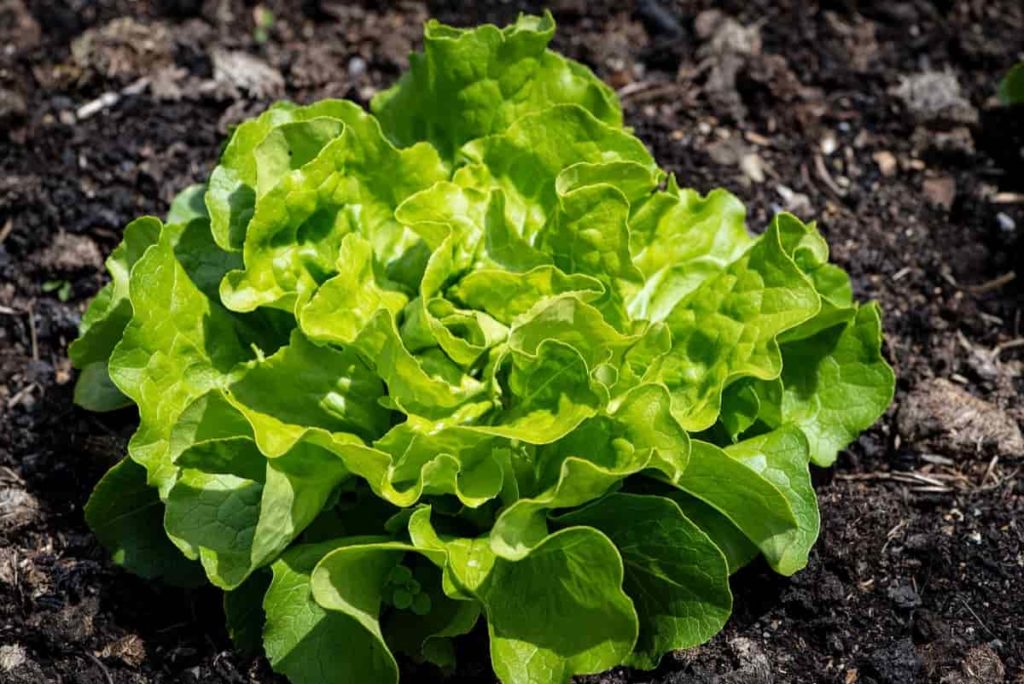
Summer Squash – Zucchini
Summer squash is probably one of my favorite vegetables to eat during the summer. It’s easy to grow, tasty, and produces quickly. You should learn how to grow squash if you need to. In essence, you direct sow the seeds in quality soil, water them and wait for them to grow and produce. However, harvest your squash or zucchini when they are young for better flavor. The Zucchini variety of Summer Squash thrives in zones 3-10 and can be harvested almost every day after reaching day 35.
Okra
Okra is another of my favorite vegetables. The harvest is ready in just 50 days. You can then pick it and fry it up into a tasty side dish that many enjoy. There are other ways to prepare Okra as well. So feel free to try this fast-growing vegetable. It’s a treat. The Cajun Delight variety of Okra matures 50-55 days after planting and can be planted in zones 3-9.
Kale/ Greens
Today’s norm is greens and kale, but it wasn’t always that way. However, learning is all about preparation. Even more, now that we try to grow most of our food. A quick-to-produce vegetable is always a hit. In only 25 days, you’ll be able to harvest baby greens from mustard greens or kale. After about 50 to 65 days, you should have mature leaves. In zones 8-10, kale is a plant that can be grown all year round; it can also be grown in zones 7 and 8.
Snow Peas
Peas have always been fascinating to grow. But, unfortunately, it is necessary to plant many of them to get a good harvest due to inexperience. You could still plant something edible on it if you like. But, in general, it takes ten days for snow peas to germinate.
Broccoli
Broccoli likes cooler weather, making it an excellent choice for those who grow most of their food. While the weather is still cold outside, it is refreshing to grow something green. So if you love broccoli too, you can grow it and harvest it in about 60 days. Broccoli takes about 60 days to mature. You can, however, enjoy a smaller head of broccoli even sooner. It depends on your preference.
Turnips
Another unique vegetable is the turnip, as it provides two products from a single plant. Additionally, turnips produce a bulb with a distinct flavor. You either love them, or you don’t. To determine which category you fall into, you’ll have to try them. Regardless of whether you like turnips or not, they produce some great greens. The first boil is poured off, and then you can boil them again.
It will remove some of their bitterness. They are then cooked with bacon, onions, crushed red pepper, salt, and pepper. As a result, you will have a delicious side dish. You can have turnip greens in about 40 days and turnip roots in around 60 days if this sounds good to you.
Chili
It is simple to grow this essential ingredient of Indian cuisine. Dried red chilies are used to harvest the seeds. Combine equal amounts of cocopeat, compost, and perlite (or tiny pieces of thermocouple). The potting mix should be placed in a small pot and soaked in ample water overnight.
In case if you miss this: Organic Vegetable Gardening for Beginners
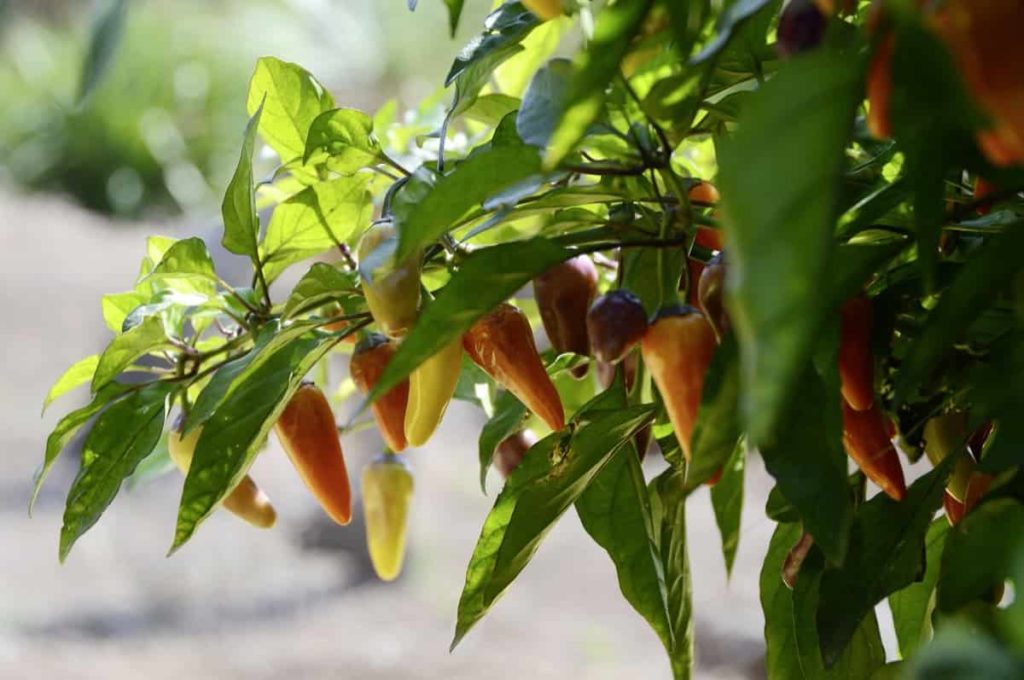
You can then cover each chili seed with mulch or hay the next day. Water seeds until they germinate into tiny saplings. As soon as the leaves appear, move each sapling into a pot at least 20 inches high. Water your plants daily until they bloom. Reduce the frequency of watering after flowering. When the chilies are fruited, harvest them.
Brinjal
Pick the brinjal straight from your backyard garden. To grow brinjal, soak seeds overnight and sow them in well-draining soil. Mix soil, compost, cocopeat, sand, and neem cake powder together to make a potting mix. Transplant the saplings into the new potting mix once they reach 5-6 inches in height. Plants such as tomatoes, broccoli, cabbage, etc., can be companion plants.
Bitter gourd
Hot rice combined with crispy, fried bitter gourds tastes delicious. They are also easy to grow. The seeds should be soaked overnight and sown in small pots with only two seeds sown together. Red soil must be at least 30 percent, compost should be at least 20 percent, cocopeat should be 20 percent, and neem cake should be 10 percent. Water thoroughly and store the mix.
Carefully remove a sapling with the soil and transfer it to a larger pot. Sticks are inserted into the soil to support the creeper. It would help if you pinched the side stems so that the main stem grows up to 6-7 feet. Then, every week, add compost to the soil. To avoid infection, remove the leaves near the base of the plant. Pinch the tip-off when the plant reaches 7-8 feet in height.
Cucumber
It is another essential element in almost all world cuisines due to its high potassium and Vitamin K content. Fresh from your garden, this crunchy goodness is even better when consumed raw. Cucumber seeds need to be soaked overnight before sowing. Put in one-part soil, compost, perlite, and cocopeat in a good quality potting mix.
In case if you miss this: Top 10 Flowers to Grow in Pots
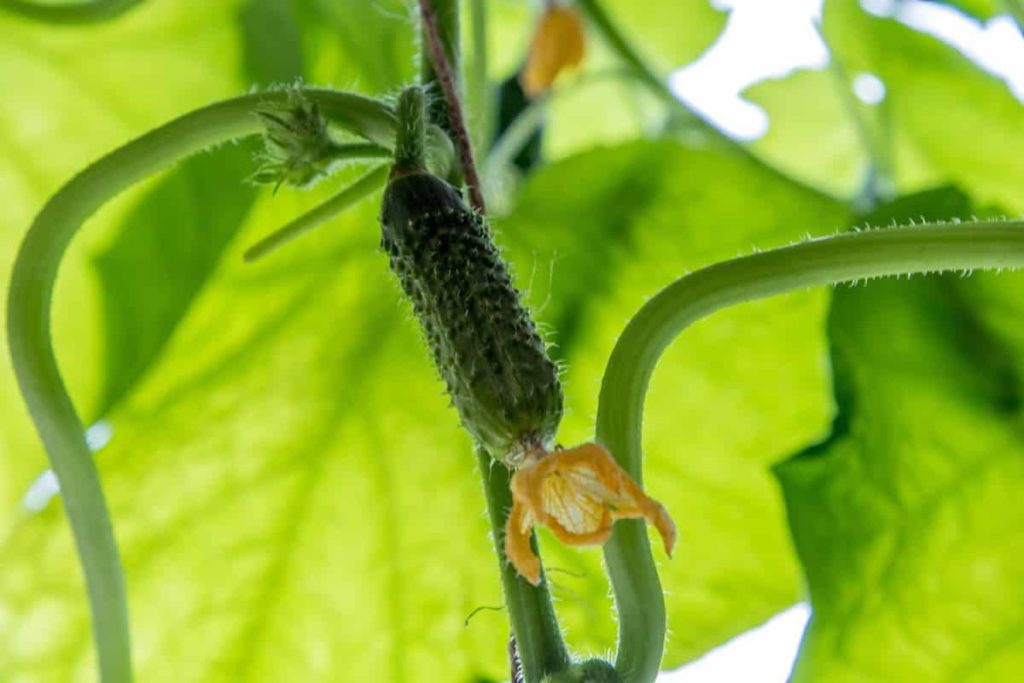
Make a 5 mm depression in the soil using your thumb to sow the cucumber seeds. Add loose soil over the seeds and water gently to avoid exposing them. Always maintain a moist environment around the seeds. Transplant the saplings into larger pots after the seeds have germinated and four true leaves have appeared. Direct sunlight should be available to plants for at least six to eight hours a day.
Celery
Celery ends tend to get thrown out when cooking, but the scraps are turned into new stalks, which you can use in soups, juices, or even just as-is. Celery with the root end, soil, slow-release fertilizer, and shady patches at midday are needed. Approximately three months are needed for growth.
Kailan
Kailan is a dark green leafy vegetable that is a popular addition to zi char dishes. Kailan seeds, soil, slow-release fertilizer, and a spot with 5-6 hours of direct sunlight are necessary. Germination time is 10 to 15 days. The time it takes to grow is between 60 and 70 days. Sow the seeds in the soil and water them daily, ensuring the soil is moist. After ten days, fertilize the seedlings when they are more robust. When the first flowers appear, harvest the stems and leaves. If your plant has adequate nutrients, it will continue to produce leaves until 2-3 more harvests can be obtained.
Capsicum
Chili has become an essential part of Indian cooking and urban gardens. If you can grow it, you will be rewarded. In addition to cocopeat/peat moss, vermiculite (or perlite), and neem cake, prepare a potting mix. Capsicum seeds are sown in late winter, spring, and early summer. It thrives in temperatures around 60 degrees Fahrenheit. Seeds are sown in a seedling tray first, and the soil is covered with plastic wrap to retain moisture.
In case if you miss this: Top 15 Flowers to Grow in the Backyard
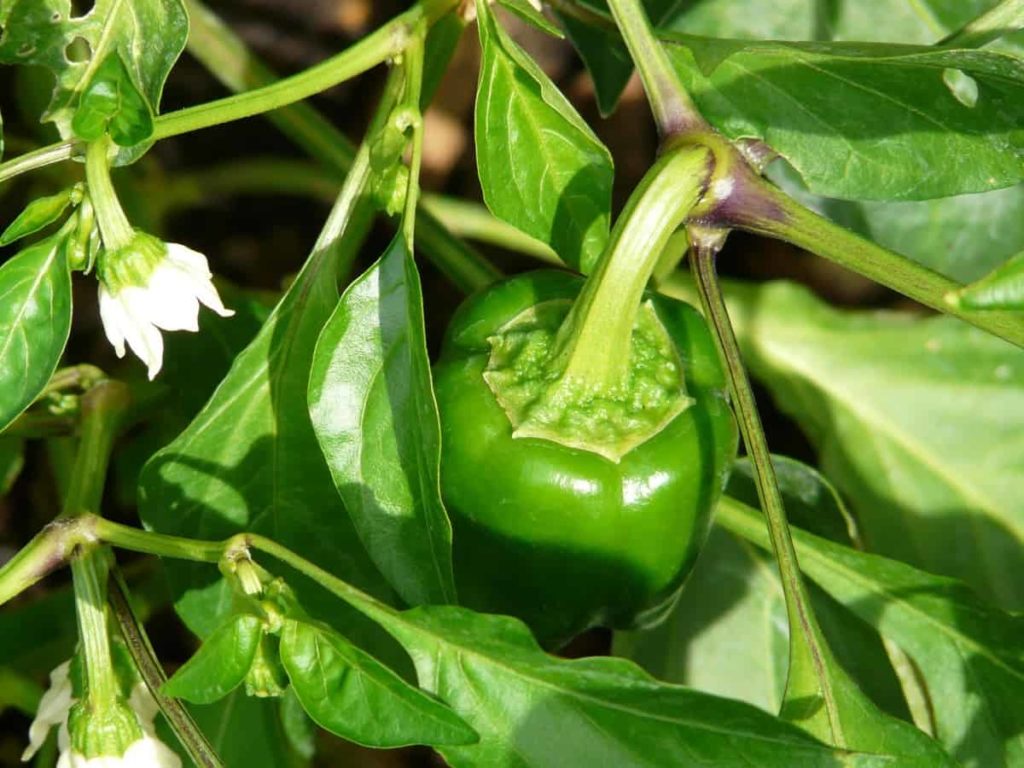
After removing the plastic cover, place the tray in a bright area to allow the seeds to germinate in 10-15 days. Upon the appearance of true leaves, transplant the saplings in larger containers. Place loosely covered potting soil on top. Keep your plants watered on a regular schedule. Water-soluble organic fertilizers are applied every two weeks. Fresh capsicums take around 60 to 90 days to fully mature.
Commonly asked questions about fast-growing vegetables at home
1. What are some methods of growing vegetables at home?
- Decide where to go
- Pick your vegetables
- Make sure the soil is prepared
- Verify planting dates
- Put the seeds in the ground
- Pour water into the container
- Don’t let weeds grow
2. What vegetables can you grow at home all year round?
- Tomatoes
- Peppers
- Eggplant
- Okra.
- Onions
3. What is the best way to make a vegetable garden at home?
A potting mix comprises thirty percent soil, twenty percent compost, twenty percent cocopeat, twenty percent sand, and ten percent neem cake powder. Transplant into the new potting mix once the saplings are 5-6 inches tall. Then, companion plants like broccoli, tomato, cabbage, etc., can be planted with them.
4. What vegetables can I grow in pots at home?
- Onions
- Peas
- Eggplant
- Lettuce and other greens
- Carrots
- Cucumber
- Organic Gardening on a Budget: Low-Cost Methods and Materials
- Gongura Seed Germination and Planting Methods
- Cabbage Seed Germination and Selection
- Broccoli Seed Germination and Selection
- Asparagus Seed Germination and Variety Selection
- Seasonal Flower Gardening: Best Practices for Spring, Summer, Fall, and Winter
- How to Grow Hibiscus from Flower
- Plantation Ideas for Home Decoration: A Beginners Guide
- Flower Garden Designs and Layouts for Beginners
- Planting and Spacing Techniques in Papaya: A Beginner’s Guide
- Growing Gold: Essential Techniques for Planting Pineapples
- How to Make Kalanchoe Plant Bushy: Home Remedies and Solutions
- 11 Reasons Why Your Gardenia is Not Blooming: Home Remedies and Solutions
- Eco Elegance: The Guide to Designing a Drought-Tolerant Landscape
- Gardening on a Slope: Strategies for Hillside Landscaping
- Nourish and Flourish: Top Organic Mulches for Thriving House Plants
- Everything You Want to Know about Indian Mogra Flower: Discover Uses and Growing
- Green Thumb Success: Expert Tips for Cultivating Greenhouse Pumpkins All Year Round
- Maximize Growth & Flavor: The Ultimate Guide to Companion Planting in Herb Gardens
- How to Control Rhododendron Problems Naturally: Home Remedies and Organic Ways to Fix Them
- Natural Magic: The Remarkable Benefits of Cinnamon for Plants
- Best Steps to Revive Dying Tulip with Natural and Organic Treatment
- 10 Reasons Why Your Angel Trumpet is Not Blooming: Remedies and Treatment
- How to Fix Periwinkle Leaf and Flower-Related Problems: Natural Remedies and Solutions
- How to Fix Zinnias Leaf and Flower Problems: Discover Natural and Home Remedies
- Organic Steps to Induce Lemon Tree Flowers: A Comprehensive Guide
- Bloom Booster: Crafting the Perfect Homemade Bougainvillea Fertilizer
- Optimizing Growth: A Guide to Applying NPK Fertilizer for Potted Plants
- 10 Best Homemade Fertilizers for Rubber Plant: DIY Recipes and Application Method
- How to Boost Female Pumpkin Flowers: Effective Steps for More Flowers and High Yields
- Transform Your Indoor Garden: Top Benefits of Pink Salt for Houseplants
- 10 Best Homemade Fertilizers for Peacock Plants (Calathea): Easy DIY Guide
- Unlock Blooms: 9 Reasons Why Your Potted Chrysanthemum is Not Blooming
- 8 Reasons Why Your Potted Hibiscus is Not Blooming: Fix it with Simple Solutions
- Unlock Blooms: 9 Key Reasons Your Potted Frangipani Won’t Flower
- 10 Reasons Why Is My Ice Plant Not Blooming: Remedies and Treatment